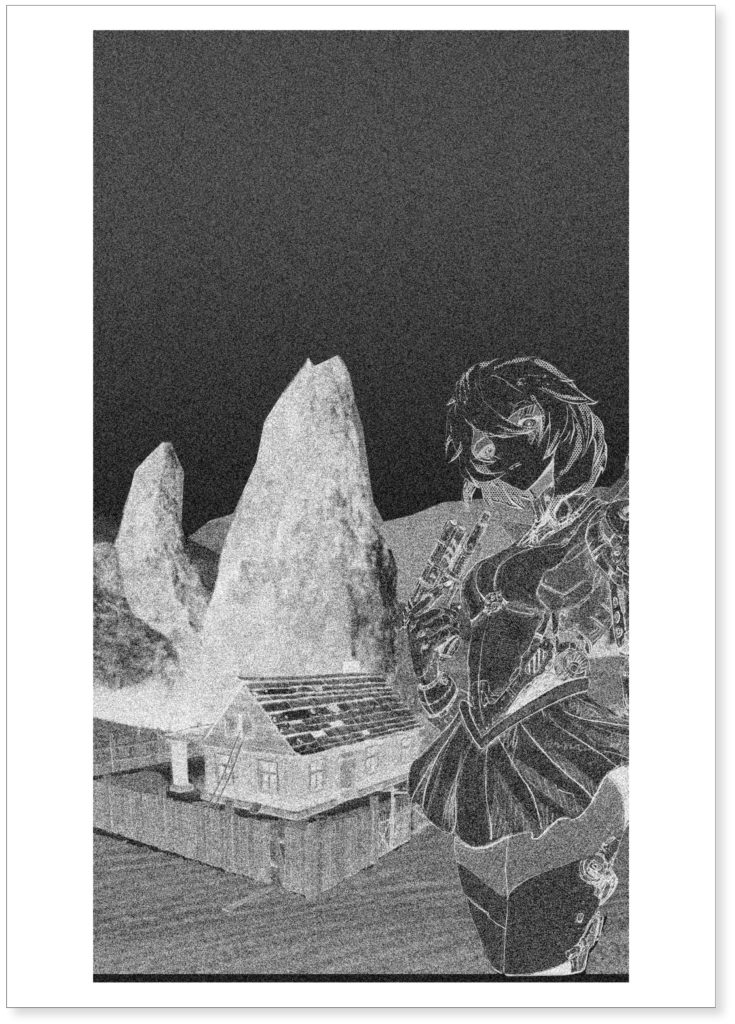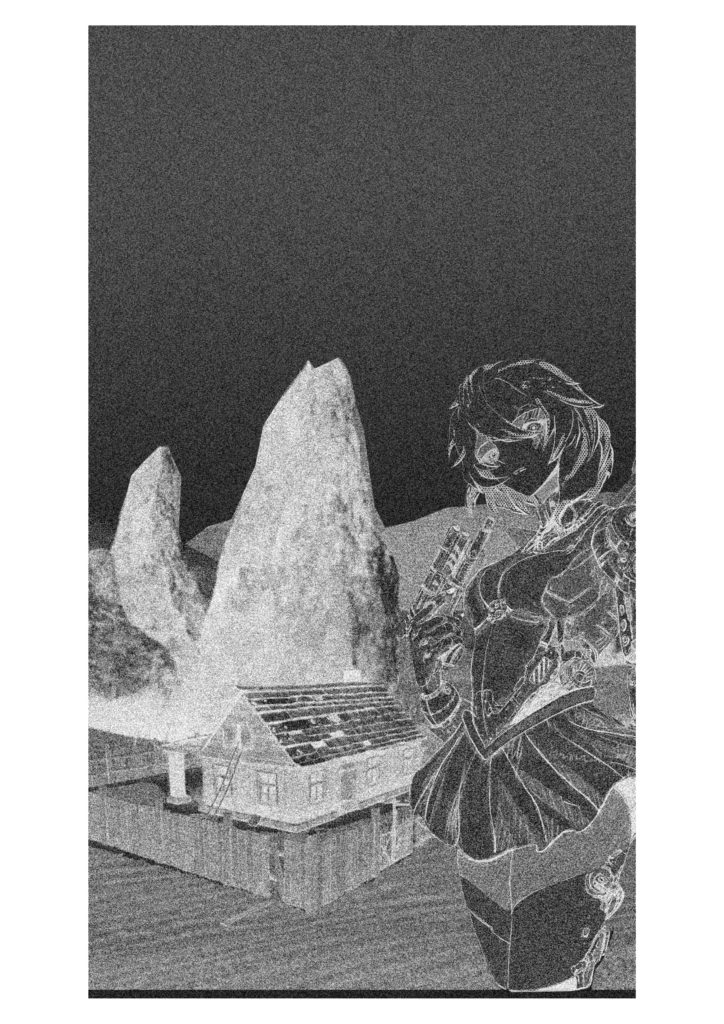
Having fun in the desert: a waterless and desolate collective dream.
Parasite 2.0
In 1972 Ettore Sottsass published “The Planet as a Festival” on Casabella n. 365. Dreaming of a humanity free from the chain of labour, Sottsass imagined a city sitting at the margins of our society and shaped like a music festival. Living in a constant hallucinatory reality, the inhabitant of the Planet as a Festival […]
In 1972 Ettore Sottsass published “The Planet as a Festival” on Casabella n. 365. Dreaming of a humanity free from the chain of labour, Sottsass imagined a city sitting at the margins of our society and shaped like a music festival. Living in a constant hallucinatory reality, the inhabitant of the Planet as a Festival mixes hedonism and new spiritualism, in the bleached California counterculture sauce. It’s interesting to see how today both the extremes of hedonism and spirituality are embodied by the new generations. From one side there’s the Burningman-esque psilocybin-infused pagan tribe, and from the others a constantly growing mass of radicalized conservative-religious-mass, retreating into traditional religions, spending time on Reddit’s chatgroups more than churches or mosques. What holds together these two tendencies? Religious spirituality and Burning Man Festival? The desert.
The desert has always been a place full of fascination for man. The Oxford Dictionary defines it as “a waterless, desolate area of land with little or no vegetation, typically one covered with sand”. An example of this, or rather the archetype of a ”desolate area” would be the Sinai desert, where we can observe two of its most important features.
The first being that due to an absence of water and vegetation, life becomes impossible; and a place where life cannot exist is the antithesis of an anthropised landscape, the opposite therefore of the artefact, of architecture or its settlement agglomerations.
The second feature concerns specifically the archetype of the western (or more precisely Mediterranean) desert: the Sahara, and the Sinai.
Here we find the meaning given to this place from an ascetic or metaphysical point of view, with extreme reference to the history of the Hebrew people— it is on Mount Sinai that they receive the Tablets of Stone. Therefore the desert takes on huge significance as the birthplace of the three great monotheistic religions of Mediterranean origin. It becomes the space in which man can reinvent himself through a state of isolation.
It is therefore apparent that the desert belongs more to an mystical inner world rather than the scientific domain of the rational mind. From the biblical theology of the desert of Moses, or the hermit of “Simòn del desierto” by Luis Buñuel, to the “villain” El topo by Alejandro Jodorowsky, the desert is considered the land of the mystic, of the inwards-looking, of the search for oneself, of the rebirth in new forms, whichever they may be. It is precisely on how this aspect is closely linked to symbolic architecture that we will focus our attention.
The first architecture we will visit on our journey through the desert is the Tabernacle. According to the Hebrew religion it is the primordial architecture; a basic element of their forty year search for the Promised Land. To wander in the desert is then fundamental in discovering the land of Canaan.
The Tabernacle was a mobile sanctuary thoroughly described in the book of Exodus. Our regular interpretation of a temple is that it can be settled. Even though for Hebrews and Christians the Tabernacle is God’s house, in Latin it simply means “abode”. Its etymology then bring us back to the archetype of the shelter. Observing its Latin root, both tabernaculum or taberna derive from the word tabula, wooden board, matrix of possible architectures. The Latin meaning of Tabernaculum was hut, meant as a military encampment. A sort of foundational military outpost, a settlement from which a possible conurbation could flourish.
If we consider the Tabernacle from an architectural point of view, it is extremely simple, but it already embodies the features and structure of the urban matrix. It is a fenced area, a corral with an architecture in the middle. This architecture presents a clear distinction in terms of the spaces and the powers that live within it. It is divided in fact, in two parts: the Holy Space and behind it the Holy of Holies, the inner sanctuary of the Tabernacle, respectively accessible to priests and Levites. According to their tradition, it symbolised the structure of the Cosmos and the future history of the 12 Tribes of Israel until the Messianic age. It was a cosmology, it represents the entire universe, thus it was a narration and a vision of the life that surrounded them.
If we travel forward in time, we can find some analogies between the Mediterranean desert nomadic architectures and the fixation with desert communes of the American counterculture. Drop City, for example, was established in southern Colorado around 1965. It’s considered the first rural hippie commune. Mainly composed of Buckminster Fuller’s geodesic domes, at the base there was the desire to “drop out” mainstream lifestyles, infused with consumerism and individualism. If we go back to the Tabernacle resembling the Cosmos, the geodesic dome doesn’t hide its origins, it literally translates the shape of the globe into architecture. Under the sky of your geodesic dome, everything can happen. You can experiment with your body and sexuality, with psycho-active substances while imagining new human frontiers. Unfortunately, Drop City experiment shut down in 1973.
A few years ago another planet-shaped structure made its appearance in the desert of Black Rock Nevada, where the Burning Man Festival takes place. It was designed by the yes-man par excellence, a just-for-fun Danish architect called Bjarke Ingles, who runs a studio called BIG where everyone seems to have a lot of fun. A number of images of the Great Orb sphere were released straight after the festival started. The mirrored sphere is shining with a grey desert as a background, so perfectly clean and glossy you can literally mirror yourself in deep introspection. But a few seconds after Mother Nature did her job. The desert sand started rendering it opaque, as we can see from the endless pictures posted by Instagram influencers and tech dudes. As with Drop City, is the failure inevitable when we try to conquer desert frontiers with our architecture? It might not be a case that the last edition of Burning Man was flooded by a messianic rain, of great Deluge proportions. And where are our Noa’s arks?
In the middle of another desert quite far from Black Rock in Nevada, the king of Saudi Arabia is launching a new courageous project called Neom. Launched with hyper-real renders of shiny skyscrapers and a big event at Venice Architecture Biennale 2023, Neom is a special economic zone, “a new model, a living laboratory for entrepreneurship, a home for an international community of dreamers and doers – set in breathtaking natural landscapes and driven by advanced disruptive technology.” Once again, the desert is the frontier we have to explore and where to venture to dream a new world, as it was for the colourful hippies of Drop City back in 1965. But where’s the difference between these two experiments? In the exclusivity. Both projects are recruiting archistars—Zaha Hadid in Neom and Buckminster Fuller Drop City. But the geodesic dome is freely released as a common project, with manuals like Dome Cook Book, a counterculture best seller with the instructions for your desert architecture.
What’s the point of imagining new realities in the deserts if we don’t share this dream collectively? How did we move from the desert as a hostile environment related to survival and spirituality to an isolated playground for privileged hyper-rich and Burning Man goers? If we go back to where we started, the desert is the opposite of life, it’s impossible to inhabit. But today seems that we gotta reclaim our deserts, a place of constant experimentation.

Dreaming the desert by Parasite 2.0, 2023.